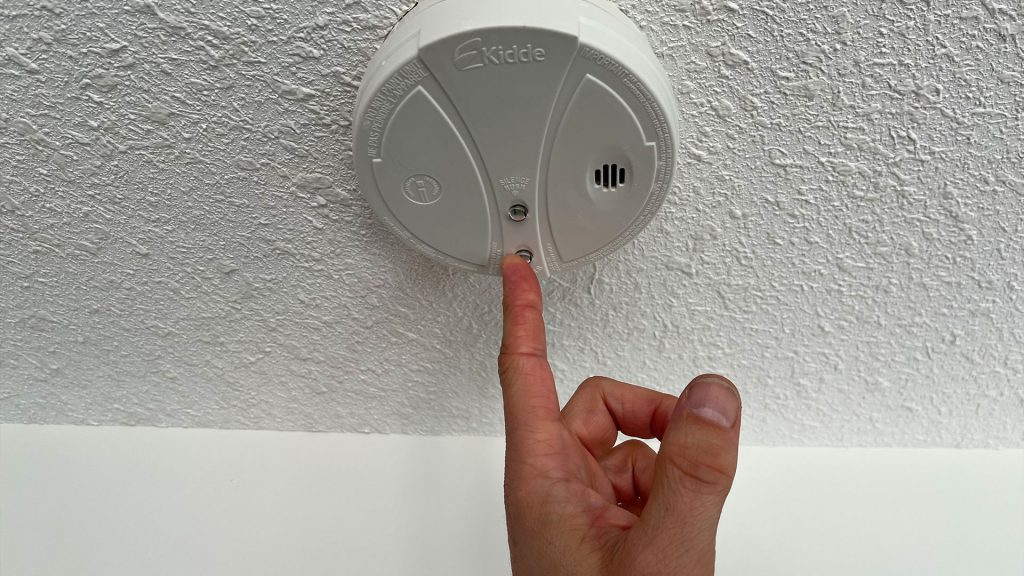
Test your smoke alarm every month
A Statistics Canada report commissioned by the National Indigenous Fire Safety Council (NIFC) shows that Indigenous people are over five times more likely to die in a fire. This national fire safety week, the National Indigenous Fire Safety Council says to reduce risk, install a smoke detector.
Inuit people are over 17 times more likely to die in a fire, and First Nations people living on reserves are 10 times more likely to die in a fire than the average non-Indigenous person in Canada according to the report Mortality and morbidity related to fire, burns and carbon monoxide poisoning among First Nations people, Métis and Inuit published in 2021.
For the Métis, the average is two times more likely to die in a fire.
“These are pretty daunting numbers,” said Len Garis, the director of research for the National Indigenous Fire Safety Council. “We looked back in history as best we could to see how long [the rate of deaths] was similar…going back 25 to 30 years.”
The NIFSC is hoping to improve their reporting data overall, and so they have created a place for communities to report incidents.
Fire protection is an issue for Indigenous communities. On reserve, there is no national fire code protection that mandates safety standards or enforcement. Currently, standards have to be adopted by chief and council, who would then be responsible for enforcement.
According to a press release by the NIFC, every other jurisdiction in Canada has established building and fire codes, including airports and military bases.
There are a few reasons why more fire deaths occur among Indigenous people, including poverty, inadequate housing and housing that does not have smoke alarms. A lack of fire departments or adequate water pressure have also been pointed to as causes for fire deaths.
Smoke alarms are the best defense
National fire safety week is a good time to raise awareness about the importance of smoke detectors. “The strongest message we can give right now is make sure you have a working smoke alarm in your home. We know from our research that a working smoke alarm reduces your risk by at least 50 per cent,” said Garis.

Additionally, smoke alarms are a relatively inexpensive intervention in stopping deaths. The Government of Canada does have fire protection funding available for First Nations communities.
Garis said funding is a good start, but that education and awareness must be an ongoing discussion in communities.
“We did some research in this area and there is a wear off effect. If I were to show up at your home and give you some advice about fire safety it would leave an impression in your mind for about two years.”
Garis said that installing a working smoke alarm and coaching people to test the alarm can increase that time to four years.
“If I could pull a switch right now I would take $50 million and I would walk across this land installing smoke alarms in everyone’s home,” said Garis.
Jurisdictional neglect leads to fire deaths
In 2021, the Ontario chief coroner said in a report on fire deaths on First Nations territory that there is “jurisdictional neglect.” Five additional deaths occurred while the coroner was conducting a review at Big Trout First Nation.
That review, which followed several fatal fires on Ontario reserves, said because First Nations lands are regulated by the federal Indian Act, provincial building codes generally don’t apply and First Nations often end up falling through the cracks.
Overall, it appears that other First Nations face the same problem.
Tanya Talaga wrote about a death of a nine year old First Nations child for the Globe and Mail. Cindy Blackstock in early 2022 wrote about the death of three First Nations children in a housefire at Sandy Lake First Nation. There, community officials cited a lack of adequate water lines, which prevented them from being able to connect to a fire hydrant.
In 2019, couple Marvin and Janet Gibbs and three young children died in a fire in small-town Alberta Chief Tony Alexis, who was Janet Gibb’s nephew spoke about the sadness the family and community was feeling with this horrible loss. Angela Alexis, whose three children perished in the fire is now missing from Alexis Nakota Sioux First Nation.
Despite the federal government saying that fire protection is an essential service that can mean the difference between life and death, The Canadian Press reported a briefing document showing that fire protection is not legislated as an essential service on First Nations land.
Adopting building and fire standards
“The standards have to be developed by and in conjunction with First Nations people,” said Garis. He said it is important for the community to buy-in on the importance of building and fire safety codes.
“We need some sorts of standards or policies so we can keep first nations people safe. I believe a part of the problem is an inconsistent application of safety standards in first nations homes,” said Garis.










